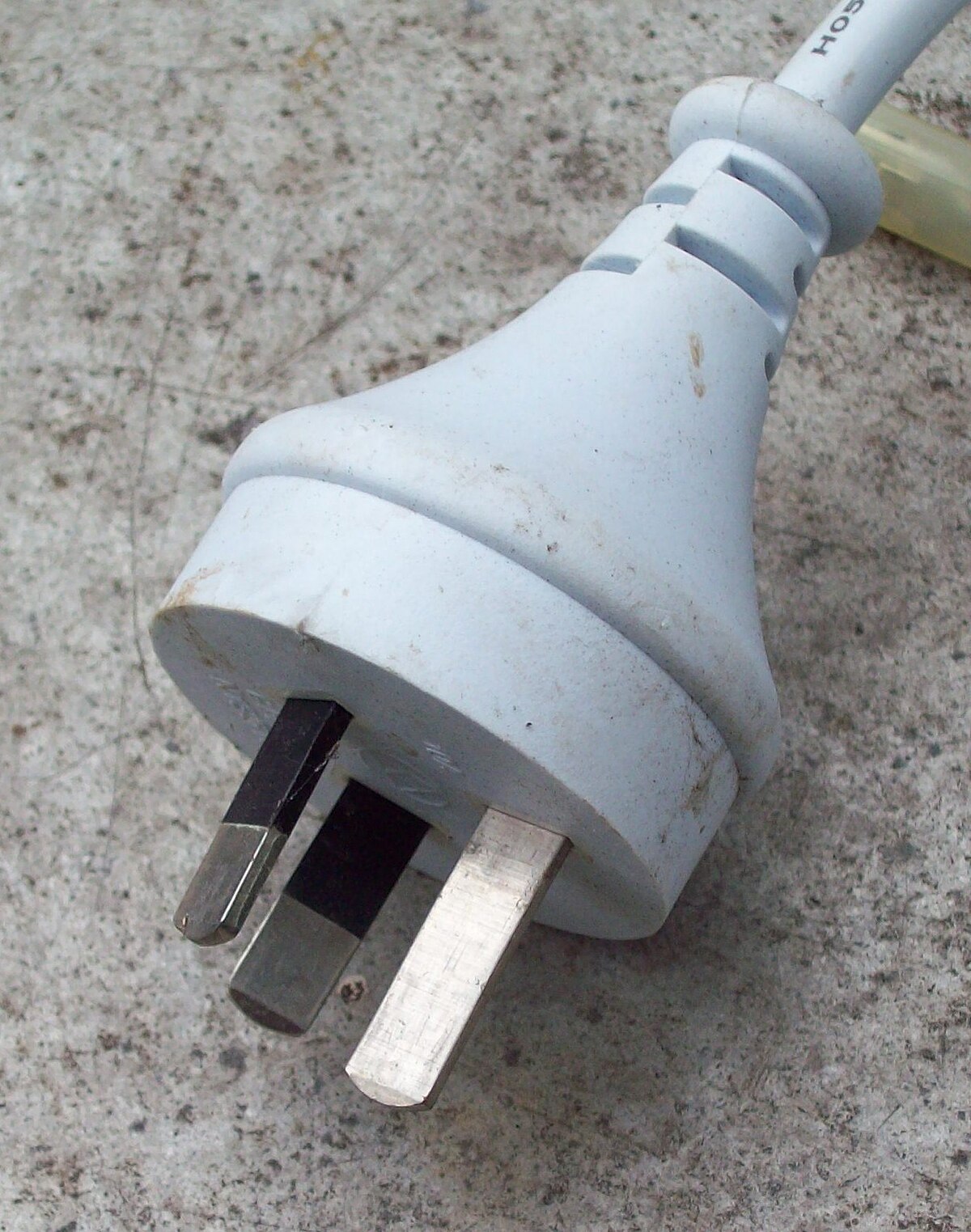The !0 A, 15 A and 20 A socket-outlets
shown are connected to circuits rated at 20 A (2.5 mm²).
25 A and 32 A socket-outlets are supplied by circuits of those higher ratings
The "higher rated" socket-outlets are for use with devices with a higher current "draw".
Window mounted Air-Conditioners often required more than 10 A, so 15 A socket-outlets were required.
("Installed" (hard wired) Air-Conditioners are now much more common.)
Surface mounted 10 socket-outlets (
https://commons.wikimedia.org/wiki/File:Australian_Surface_Socket-Outlet_and_Plug.jpg ), used largely for "luminaires" and "ceiling-fans", are usually installed on 10 A (1.5 mm²) "Lighting Circuits".
(Hence, there should be no problems of which any "Winston" could complain !)
While these higher rated socket-outlets exist, I doubt if 99% of the Australian population will ever have seen any above 15 A in use (I have not)
The 15 A Plug and Socket-outlet is used at Caravan Parks.
Higher rated socket-outlets tend to be "Industrial" and "Round-Pin" socket-outlets are usually used above 15 A.
In other words, at first sight it would seem (to me) that it would be simpler and more flexible/versatile for all sockets on 20A circuits to be 20A ones. What am I missing?
Since you have raised this question, the answer may be one of "chicken and egg" or of "evolution" of standards and practices.
If you view (or scan)
https://www.cool386.com/plug/plug.html you will see that the Australian (10 A) plug was
developed in the 1930s.
At the time, there were (by one count) around 70 different types of (two and three pin) British and US plugs and socket-outlets (of various "ratings") in use in Australia !
In the above it is remarked :- "While electrical safety wasn't given the attention that gets these days, it was realised that earthing of appliances was a necessity, and thus three pins were required."
This is summarised in
https://en.wikipedia.org/wiki/AS/NZS_3112
"Australia's standard plug/socket system was originally codified as standard C112 (floated provisionally in 1937, and adopted as a formal standard in 1938).
The Australian standard of 1937 was the result of a "gentlemen's agreement", reportedly from 1930, between manufacturers Fred Cook of Ring-Grip, Geoffrey Gerard of Gerard Industries and Brian Harper Miller of the State Electricity Commission of Victoria (SECV).
The design was based on an American plug and socket-outlet first intended for use at 120 V which was patented in 1916 under U.S. Patent 1,179,728 by Harvey Hubbell."
"One of the reasons behind the adoption of that particular design was that it was cheap to make, with the flat pins being able to be easily stamped out of sheet brass, in contrast to round pins or thicker rectangular ones used in other countries."
The American plug and socket were "rated" at 15 A 120 V (1800 W maximum)
- and, I suspect that the patent may have "lapsed" !
Considering that Australia used 240 V, rating these at 10 A 240 V gave 2400 W maximum - which was probably considered (more than) enough for domestic appliances, at the time.
It is my understanding that Australian "wiring practices" of the time were closely aligned to those of pre-war UK.
Certainly, after WWII "Power" wiring in Australian homes was usually "Imperial" 7/029, which is the equivalent of 2.5 mm² today.
Using Fuses, this wiring was "rated" at 16 A but became "rated" at 20 A when using quicker acting Circuit Breakers.
Similarly, "Lighting Circuits" (3/029) were rated at 8 A but became "rated" at 10 A when using Circuit Breakers.



